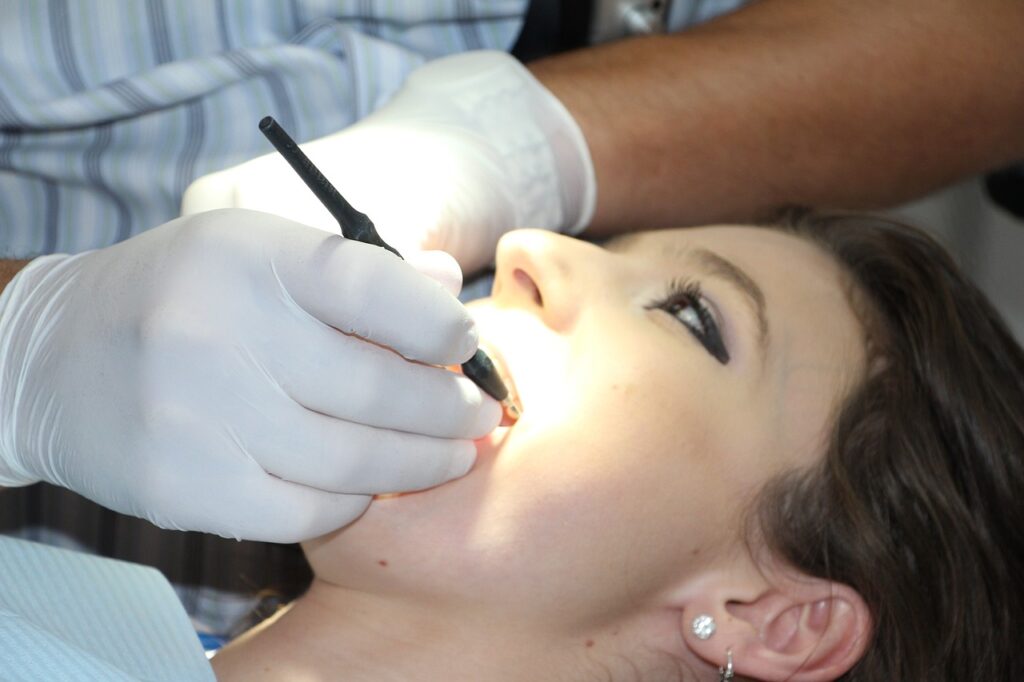Cavity vs. Stain? Learn to Tell the Difference and Get the Right Treatment
If someone values the appearance of their teeth and keeps an eye out for unwanted changes, they may wonder to themselves, What’s worse: a cavity vs. stain? Even more importantly, what can they do if they suspect that they’ve fallen victim to one of these issues?
It’s crucial to keep your teeth in great condition – not just for aesthetic reasons, but because dental problems can become worse over time if they’re left untreated. If you suspect that something is going on with your teeth, the first step is figuring out what the issue is. There are many differences in cavity vs. stain treatments, so it’s recommended to book an appointment with a trusted dentist to discuss the best way forward.
Of course, some people just want to be proactive. If they know which symptoms to look out for, they can act quickly if an issue starts developing. Whatever the case, the information below should shed some light on the subject.
In This Article:
- Cavity vs. stain: what’s the difference?
- How to tell if you have a cavity
- How to tell if you have tooth stains
- What causes cavities?
- What causes tooth stains?
- Recommended treatments for cavities
- Recommended treatments for tooth stains
- Cavity vs. stain: neither should get in the way of a beautiful smile
Cavity vs. stain: what’s the difference?
Since these are two of the most common causes of discoloration in teeth, it makes sense to know the differences between them. Here’s a characteristics overview of cavity versus stain:
A cavity:
- Is also known as “tooth decay”
- Consists of a permanently damaged spot on the tooth’s surface
- Can spread from the surface to the interior of a tooth, resulting in a pit or a hole
- Typically causes some level of pain
- Is usually black, brown, or gray in color
- Once it’s past the early stages, will not resolve after changes in diet, lifestyle, or level of dental care
A tooth stain:
- Only affects the tooth enamel
- Usually (but not always) covers the entire surface of the stained tooth
- Can shrink and grow according to external factors (such as diet or level of dental care)
- Is not usually painful, unless enamel erosion is contributing to both tooth staining and sensitivity
- Appears in a variety of colors, depending on what’s causing the stain
- If it isn’t too advanced, it may resolve after changes in diet, lifestyle, or level of dental care (including professional treatments from a dentist)

How to tell if you have a cavity
There are a few overlapping symptoms between cavities and tooth stains, but there are even more differences. Here’s what you might notice if you have a cavity:
You see a pit or hole in the affected tooth
Tooth decay starts at a localized point, eventually creating a pit or hole where the cavity has eaten away at the tooth. In the earlier stages, the affected area will be small, and won’t even cause any symptoms. As the cavity grows, however, it’ll progress to the point where the tooth could become completely hollow. A cavity isn’t always possible to see or feel with your tongue, especially at its beginning stages; this is one of many reasons why regular trips to the dentist are a solid idea.
You notice a progression in tooth staining
While this may sound confusing at first, remember that cavities affect one localized area, but tooth staining generally discolors the whole tooth. Plus, tooth staining can come and go, while staining from a cavity can’t be reduced by brushing or whitening treatments. As a cavity develops, you’ll notice stains that grow over time, but never shrink. A cavity may begin as a white spot, but the stain will darken and spread as the tooth decay advances.
You experience tooth pain
For many people, this is the first indication that something’s wrong. It can be constant, or it can be triggered by eating certain foods. It can even be caused by pressure while chewing. Since a cavity only grows worse over time, it’s crucial to take any kind of reoccurring tooth pain seriously, rather than ignoring it and hoping that it eventually disappears.
Your tooth is sensitive to foods and beverages that are sugary, hot, or cold
If a cavity has damaged your enamel, you might notice an increase in tooth pain when you eat or drink sugary treats or anything that’s hot or cold. This is because these foods play a role in stimulating the nerve inside the affected tooth, resulting in varying levels of discomfort.
Important Read: What are the 5 stages of periodontal disease?

How to tell if you have tooth stains
It’s pretty easy to identify tooth stains; after all, they’re a surface-level issue that generally affects more than one tooth at once. What about the specific symptoms, though?
The stains change in color or intensity based on what you eat or drink
Since tooth stains are often directly related to the food or beverages you’ve recently consumed, you may be able to tell exactly what causes tooth stains for you. Purple stains could appear after drinking red wine, or brown stains after drinking coffee.
The exception to this is when old age has contributed to enamel erosion, which can cause teeth to yellow over time. This type of tooth staining is less likely to change based on the foods or drinks that are being consumed.
The stains improve after regular brushing or other forms of dental care
Tooth stains that are caused by external factors can sometimes be reduced – or even gotten rid of entirely – with regular tooth brushing. For more intense stains, though, a better approach is to use teeth whitening strips, or even a teeth whitening treatment from a dentist.
What causes cavities?
Cavities are caused when the acid in plaque buildup erodes the enamel that forms the outer layer of the tooth, progressively eating away at it and eventually exposing the nerve inside. The erosion of enamel results in pits or holes, which can be pretty painful if they aren’t taken care of quickly.
Plaque buildup happens to the best of us, but it’s more likely to reach problematic levels in people with the following risk factors:
- Poor oral hygiene
- Acid reflux
- Frequent consumption of foods and beverages that are sugary or acidic
- Chronically dry mouth
What causes tooth stains?
There are all kinds of factors that can cause tooth stains; some are external, others are internal, and still, others are age-related. Let’s take a closer look at the most common causes of tooth stains:
- Drinking a lot of soda, wine, or coffee
- Eating acidic or strongly pigmented foods, like tomato-based dishes, berries, or dark chocolate
- Smoking or using other forms of tobacco
- Taking certain medications
- Using too much fluoride while your teeth were still developing
- Allowing hardened plaque to build up on the teeth
- Experiencing age-related enamel erosion
Recommended treatments for cavities
Unlike tooth stains, fully formed cavities won’t go away with the right at-home treatments. This being the case, here are the options for anyone who has a cavity:
Getting dental fillings is the most common option. The decayed part of the tooth is removed using a drill, and the hole is filled with a specialized resin that matches the tooth’s color. This halts the progression of the decay, removes the cause of the pain, and restores the function of the affected tooth. Make sure you take good care of your dental fillings.
Crowns are used when the decay is so advanced that it affects the structure of the tooth. The decayed area is removed with a drill, and a cap is placed over the tooth to restore its original form and function.
A root canal is for cavities that have caused injury to the nerve inside the tooth. The procedure not only removes the decayed part of the tooth but also the nerve. Root canals are considered to be one of the more invasive treatments for cavities, but if the decay has progressed far enough to warrant this procedure, they can also be life-changing.
Also read: 6 Failed Root Canal Symptoms – How To Recognize Failed Root Canal and What To Do
Recommended treatments for tooth stains
Tooth stains are often reversible, which is good news for all the chronic coffee drinkers out there who want to whiten their smiles. If the stains are deeper than surface level, though, they may require more than just whitening toothpaste. Here are the main options:
- Figure out which foods or drinks are causing the stains, and reduce your consumption of them.
- Improve your oral hygiene by brushing at least twice a day, and flossing at least once a day. If you know that certain foods or drinks are contributing to tooth stains, you should also brush after consuming them.
- Use at-home treatments like whitening toothpaste or whitening strips.
- Get professional whitening treatments, which are preferred by people with tooth stains that are too deep to be resolved by at-home treatments.
- Consider getting porcelain veneers, which will completely cover stained teeth and give you a perfect smile. This option is great for anyone with teeth that are severely stained, have severely worn-down enamel, or have any other aesthetic flaw that they want to correct.
Cavity vs. stain: neither should get in the way of a beautiful smile
Whether you’re concerned about health, aesthetics, or a combination of both, you deserve to be proud of your smile. Cavities or stains can definitely get in the way of that, but there are several treatments available for either issue. If you’re experiencing any of the symptoms described above, maybe it’s time to book your next visit to the dentist. After all, it isn’t enough to simply inform yourself on which issue may be affecting your teeth; the next step is to get up and do something about it! Call us today!
